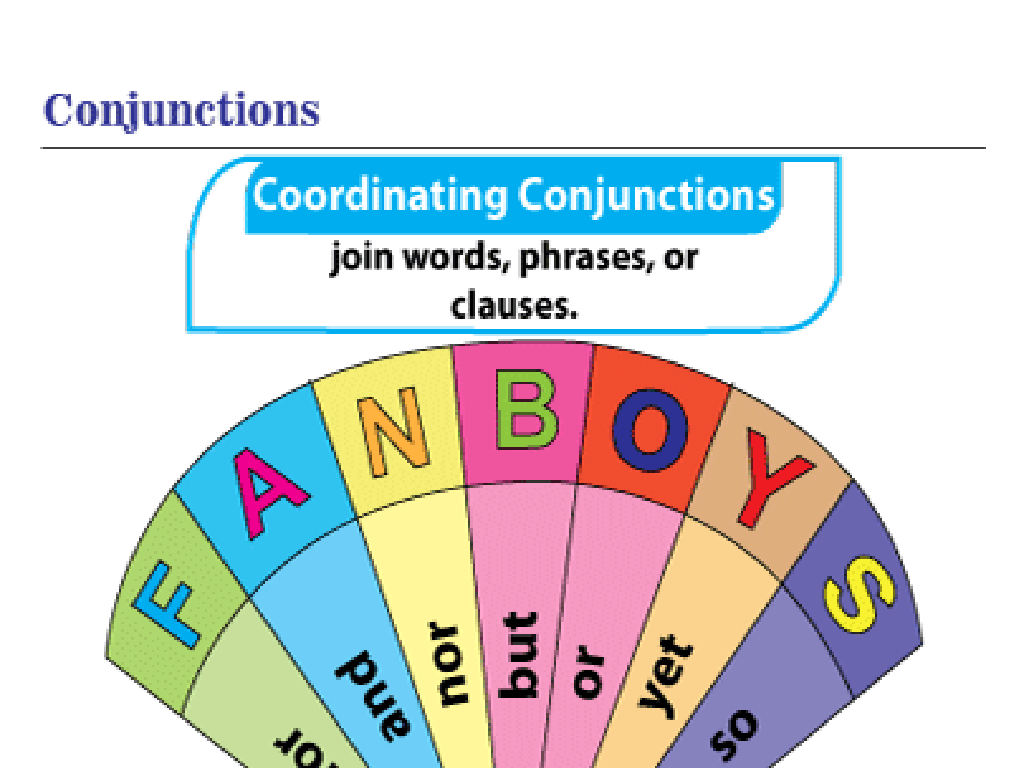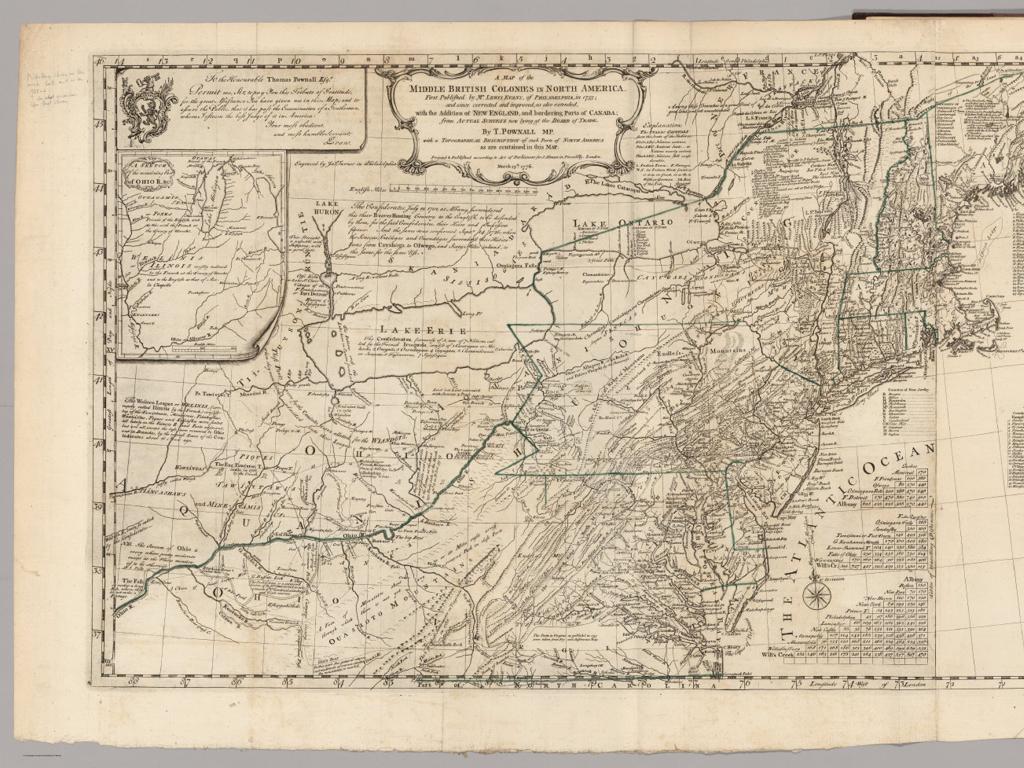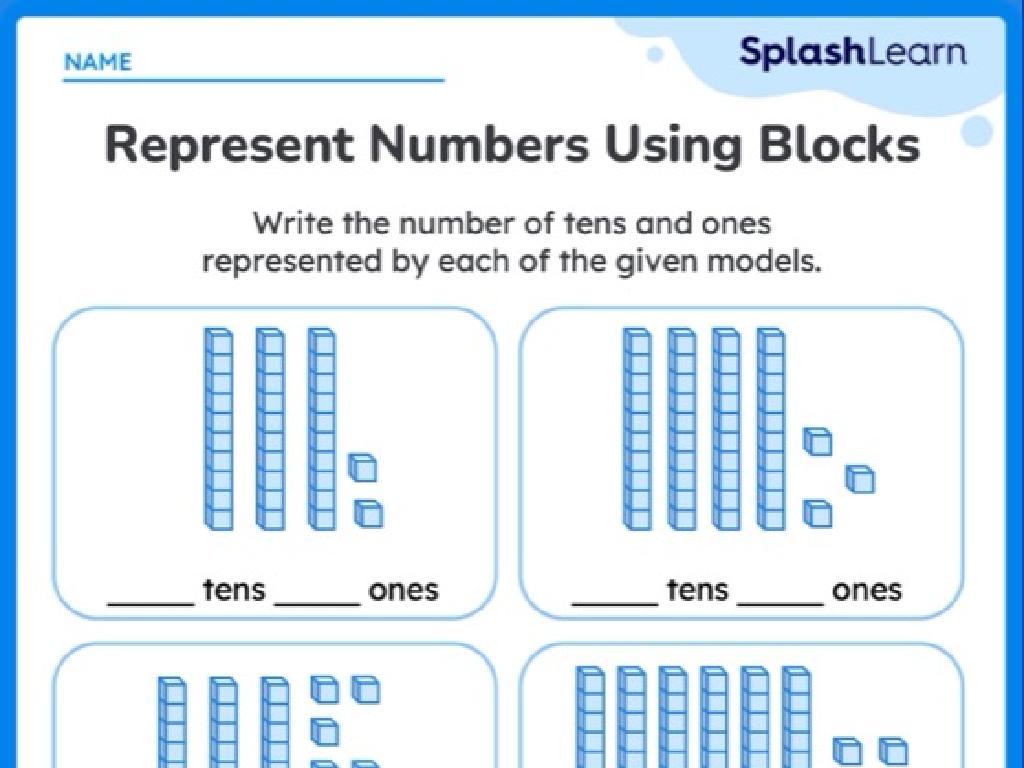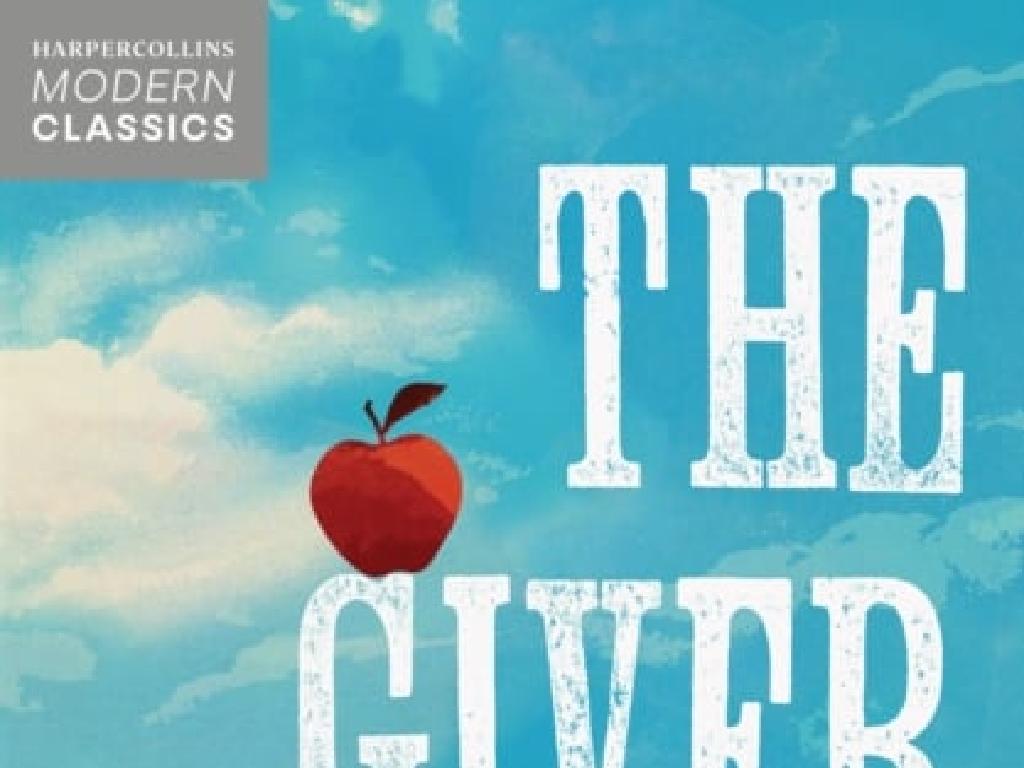Comparison Word Problems Up To 20
Subject: Math
Grade: First grade
Topic: Comparison Word Problems Up To 20
Please LOG IN to download the presentation. Access is available to registered users only.
View More Content
Math Adventures: Comparing Numbers!
– Learn ‘More’ and ‘Less’
– ‘More’ means a bigger amount, ‘Less’ means a smaller amount.
– Count objects up to 20
– Use items like blocks or apples to count.
– Solve comparison stories
– We’ll read stories and decide who has more or less.
– Share our answers
|
This slide introduces the concept of comparison using the terms ‘more’ and ‘less’ to first graders. Begin by explaining that ‘more’ indicates a greater quantity while ‘less’ signifies a smaller one. Use tangible items like blocks or fruits to help students count up to 20, making the abstract concept more concrete. Engage the class with simple word problems framed as stories to make the learning process interactive and enjoyable. For example, ‘Tom has 5 balloons, and Sally has 8. Who has more?’ Encourage students to share their answers and explain their reasoning, fostering a collaborative learning environment. The goal is to build a strong foundation in understanding and applying comparison in various contexts.
Understanding Comparison Word Problems
– What are comparison problems?
– Problems asking to compare two amounts
– Key words: ‘more’, ‘less’, ‘fewer’
– Words that signal differences in quantities
– Clues help us solve problems
– Clue words guide us to find answers
– Let’s practice with examples!
– We’ll use fun examples to learn!
|
This slide introduces first graders to comparison word problems, which are a fundamental part of early math education. Emphasize that these problems involve comparing two different quantities and look for specific clue words like ‘more’, ‘less’, ‘fewer’, and ‘greater’. These words help us understand what the problem is asking. During the lesson, practice identifying these words within various problems and demonstrate how they indicate whether we should add or subtract. Use relatable examples such as comparing the number of apples in two different baskets or the number of cookies on two plates to make the concept clear and engaging. Encourage the students to participate by finding clue words in problems you read aloud together.
Understanding ‘More’ and ‘Less’
– ‘More’ equals a bigger number
– ‘Less’ equals a smaller number
– Use objects to compare
– Count pencils to see which has more
– Practice with real examples
– Example: 5 apples vs. 3 apples, which is more?
|
This slide introduces the basic concepts of comparison using ‘more’ and ‘less’ for first graders. Begin by explaining that ‘more’ refers to a greater quantity or number, while ‘less’ indicates a smaller quantity or number. Use tangible objects like pencils or apples to visually demonstrate the concept of more and less, which can be particularly effective for young learners. Encourage the students to practice by comparing different sets of items to reinforce their understanding. Provide real-world examples that they can relate to, such as comparing the number of cookies on two plates or the number of books in two stacks. The goal is to ensure that students can recognize and use ‘more’ and ‘less’ to compare quantities up to 20 in a variety of contexts.
Let’s Compare with a Story!
– Emma and Noah’s apple count
– Emma has 5 apples, Noah has 8
– Who has more apples?
– Compare to find who has more
– How many more does Noah have?
– Subtract Emma’s apples from Noah’s
– Understanding comparison
|
This slide introduces comparison through a relatable story about Emma and Noah. Start by reading the story to the class and then ask the students who has more apples to engage them in thinking about comparison. Then, guide them to understand that by subtracting the number of Emma’s apples from Noah’s, they can find out how many more apples Noah has. This exercise will help students grasp the concept of comparison by using subtraction in a practical and visual way. For the activity, you can have students draw the apples for each character and visually compare the groups, or use physical counters to represent the apples and perform the subtraction.
Using Number Lines to Compare Numbers
– Number lines show order of numbers
– Compare numbers by position
– Which number is further to the right?
– Practice comparing with a number line
– Let’s find which is bigger: 7 or 12?
– Visual aid for understanding
– Number lines help us see the difference clearly
|
This slide introduces the concept of using number lines as a visual tool to help first graders understand the order of numbers and compare them. Emphasize that the further to the right a number is, the greater it is. During the class activity, guide students to practice by placing numbers on a number line and comparing their positions. For example, place 7 and 12 on a number line and ask students which number is bigger, reinforcing the concept that numbers to the right are larger. This visual approach simplifies comparison and helps students grasp the concept of magnitude. Encourage students to draw their own number lines and use them to compare different sets of numbers up to 20.
Drawing to Understand Problems
– Draw pictures to solve problems
– Use bars or objects for numbers
– Example: Mia and Jack’s toys
– If Mia has 8 toys and Jack has 5, draw 8 toys for Mia and 5 for Jack.
– Who has more toys?
– Compare the drawings to see who has more.
|
This slide is aimed at helping first graders visualize comparison word problems by drawing. Explain that drawing can turn a tricky word problem into a picture that is easier to understand. Show them how to represent numbers with bars or objects, like drawing sticks or circles. Use the example of Mia and Jack to demonstrate how to draw the number of toys each has. Then, guide the students to compare their drawings to determine who has more toys. Encourage the students to draw along with you and to use this method with other comparison problems. For the activity, you can have students draw different scenarios, such as comparing the number of apples to oranges, or the number of books each student has, to practice this technique.
Class Activity: Comparison Charades
– Act out word problems
– Friends guess ‘more’ or ‘less’
– Everyone participates
– Learning through play
– Reinforces understanding of comparison
|
This interactive class activity is designed to help first graders understand comparison word problems in a fun and engaging way. Each student will have a chance to act out a word problem without using words, while their classmates guess whether the answer involves ‘more’ or ‘less’. For example, one student could mime holding and comparing two imaginary objects, and the classmates would guess which one is ‘more’. It’s a playful approach to learning that encourages participation and helps students grasp the concept of comparing quantities up to 20. Prepare a list of simple word problems for the students to act out. Ensure that each student understands the rules and gets a turn to perform. The activity will not only reinforce the concept of comparison but also promote active learning and class involvement.
Wrapping Up: Comparison Word Problems
– Excellent work on comparison problems!
– Homework: Complete the worksheet
– Worksheet has problems comparing numbers up to 20
– Practice is key to mastery
– Bring any questions to next class
– We’ll review any difficulties together
|
Today’s lesson focused on understanding and solving comparison word problems, which are essential for developing mathematical reasoning in young learners. The homework assignment is a worksheet designed to reinforce the concepts learned in class. It includes a variety of problems that require students to compare numbers up to 20. Encourage students to practice regularly, as this will help solidify their understanding of comparison word problems. Remind them to bring any questions they have to the next class for clarification. The goal is to ensure that all students feel confident in their ability to tackle comparison problems independently.






